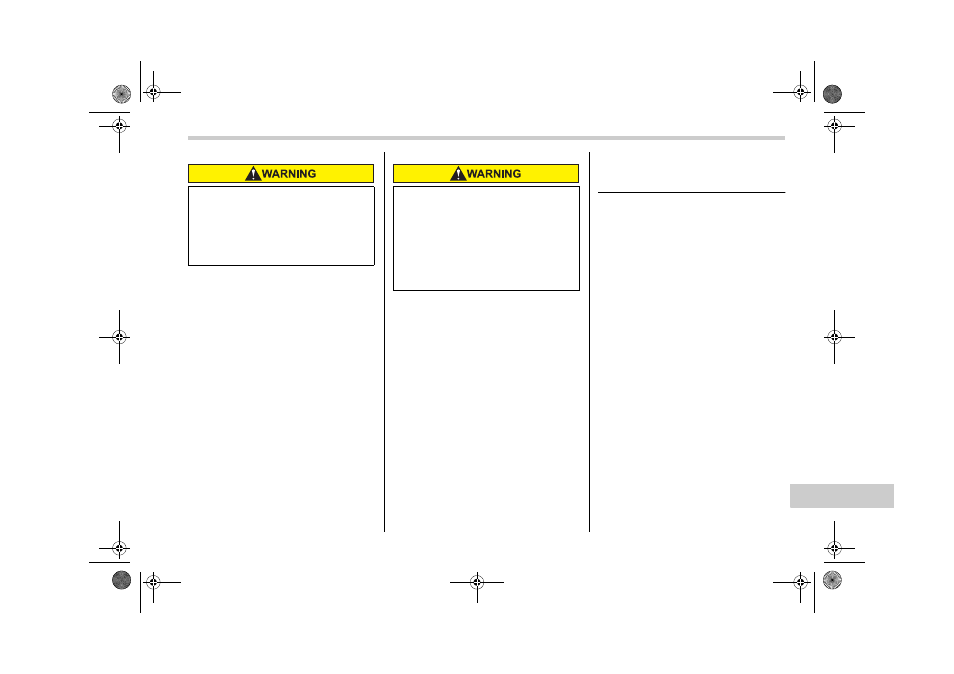Saab 2006 9-2 User Manual
Page 313

Consumer information and Reporting safety defects
13-13
13
– CONTINUED –
¢ Temperature A, B, C
The temperature grades are A (the
highest), B, and C, representing the
tire’s resistance to the generation of
heat and its ability to dissipate heat
when tested under controlled condi-
tions on a specified indoor laboratory
test wheel. Sustained high tempera-
ture can cause the material of the tire
to degenerate and reduce tire life, and
excessive temperature can lead to
sudden tire failure. The grade C corre-
sponds to a level of performance
which all passenger car tires must
meet under the Federal Motor Vehicle
Safety Standards No. 109. Grades B
and A represent higher levels of per-
formance on the laboratory test wheel
than the minimum required by law.
Reporting safety defects
(USA)
If you believe that your vehicle has a
defect which could cause a crash or
could cause injury or death, you
should immediately inform the Nation-
al Highway Traffic Safety Administra-
tion (NHTSA) in addition to notifying
Saab Cars USA, Inc.
If NHTSA receives similar complaints,
it may open an investigation, and if it
finds that a safety defect exists in a
group of vehicles, it may order a recall
and remedy campaign. However,
NHTSA cannot become involved in
individual problems between you,
your dealer, or Saab Cars USA, Inc.
To contact NHTSA, you may call the
toll-free Vehicle Safety Hotline at 1-
888-327-4236 (TTY: 1-800-424-9153;
go to http://www.safercar.gov; or write
to: Administrator, NHTSA, 400 Sev-
enth Street, SW., Washington D.C.
20590. You can also obtain other in-
formation about motor vehicle safety
from http:// www safercar.gov.
The traction grade assigned to
this tire is based on straight-
ahead braking traction tests,
and does not include accelera-
tion, cornering, hydroplaning, or
peak traction characteristics.
The temperature grade for this
tire is established for a tire that
is properly inflated and not over-
loaded. Excessive speed, under-
inflation, or excessive loading,
either separately or in combina-
tion, can cause heat buildup and
possible tire failure.
A1910BE-A-GSAAB.book Page 13 Tuesday, September 6, 2005 8:37 AM